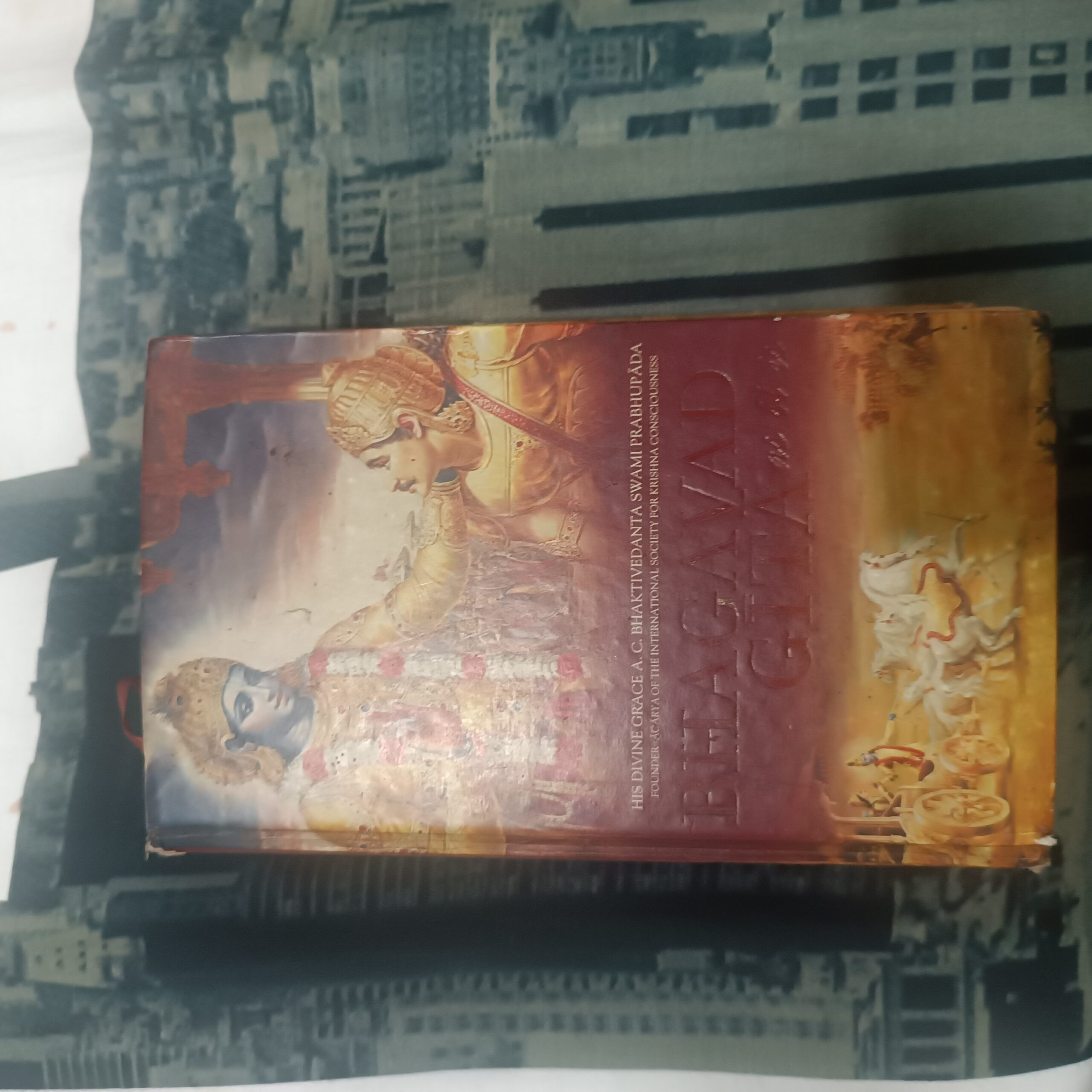The Bhagavad Gita, often called the “Song of God,” is not just a religious scripture—it’s a life manual. Set in the epic battlefield of Kurukshetra, it’s a timeless dialogue between Prince Arjuna and Lord Krishna, who serves as his charioteer and divine guide. Through their conversation, Krishna unpacks the secrets of self-realization, mental mastery, and spiritual wisdom that continue to inspire millions across centuries.
Whether you’re a student, a leader, an entrepreneur, or simply someone seeking clarity, the Bhagavad Gita offers deep insight into how to live, think, act, and evolve.
🏹 The Crisis: Arjuna’s Dilemma
The Gita begins in a moment of emotional breakdown.
Arjuna, one of the greatest warriors, is standing at the edge of a battlefield about to fight a war against his own relatives, teachers, and friends. Overwhelmed by sorrow and confusion, he drops his bow and declares that he will not fight.
“I see my own people ready to fight. I cannot kill my family for a kingdom. What is the point of victory soaked in blood?” – Arjuna
This breakdown represents the human condition. We all face moments where we’re torn between what we want, what we must do, and what feels right. Arjuna’s despair mirrors our struggles in careers, relationships, and moral choices.
🧘 Krishna Speaks: The Birth of Divine Wisdom
Krishna doesn’t just tell Arjuna to “get over it.” Instead, he compassionately explains the deeper truths of life. The 700 verses of the Gita are filled with philosophy, psychology, and spirituality—but in a practical and direct form.
Let’s explore the key teachings Krishna gives Arjuna (and all of us):
1. Karma Yoga – The Path of Selfless Action
The Gita’s most famous teaching:
“You have the right to perform your duty, but not to the results.” – Bhagavad Gita 2.47
We should do our work with focus, dedication, and integrity, but without being attached to the results.
- Don’t be discouraged by failure.
- Don’t be obsessed with success.
- Act because it is right, not because it is rewarded.
In today’s world, this is the ultimate productivity hack—focus on the process, not the outcome.
2. Jnana Yoga – The Path of Knowledge
Krishna reveals that the body is temporary, but the soul (Atman) is eternal.
“Weapons cannot cut it, fire cannot burn it, water cannot wet it, wind cannot dry it.”
This wisdom shifts your identity from “I am this body and my problems” to “I am the eternal soul.” You’re not your job, your failures, your emotions, or your bank balance. You are a limitless consciousness.
Understanding this gives you inner freedom, even in chaos.
3. Dhyana Yoga – The Power of Meditation
The Gita teaches that the mind is the cause of both bondage and liberation.
“For him who has conquered the mind, the mind is the best of friends. But for one who has failed to do so, the mind will be his greatest enemy.”
Meditation, focus, and discipline are tools to quiet the mind. With a quiet mind, we can make clear decisions, reduce stress, and live fully in the present.
4. Bhakti Yoga – The Path of Devotion
Krishna says that surrendering to God with love and trust is one of the highest paths.
“Abandon all varieties of duties and just surrender unto Me. I shall deliver you from all sinful reactions. Do not fear.”
This doesn’t mean becoming passive. It means having faith in the divine intelligence that governs the universe. It’s about letting go of ego and connecting to something higher.
5. Equality in Duality – The Art of Detachment
The Gita encourages equanimity—the ability to stay balanced in success and failure, joy and sorrow, praise and criticism.
“Be equal-minded in pleasure and pain, gain and loss, victory and defeat.”
In life, ups and downs are inevitable. But inner stability comes when you don’t let outer situations control your inner peace.
6. Swadharma – Know Your Unique Duty
Krishna emphasizes the importance of following your own path (Swadharma).
“Better to fail in your own duty than succeed in another’s.”
In the age of comparison and social media, this teaching reminds us: Live your truth. Don’t copy others. Do what aligns with your nature, strengths, and values.
🌀 The Bigger Picture: Life Is a Battlefield
The battlefield of Kurukshetra is symbolic of the battle inside all of us—the fight between clarity and confusion, fear and courage, ego and soul.
The Gita doesn’t ask you to run away from life. Instead, it tells you to:
- Engage in the world, but with inner peace.
- Work hard, but without attachment.
- Love deeply, but without expectations.
- Live fully, but with spiritual awareness.
💡 Why the Gita Still Matters
More than 5000 years after it was first spoken, the Gita is still a global inspiration.
- Leaders like Mahatma Gandhi, A.P.J. Abdul Kalam, and Albert Einstein found deep wisdom in it.
- Entrepreneurs use its teachings to stay calm in crisis.
- Spiritual seekers use it to understand the soul.
The Gita isn’t about renouncing life—it’s about mastering life.
✅ Practical Takeaways for Today’s Life:
| Gita Teaching | Modern Benefit |
|---|---|
| Do your duty without attachment | Stress-free work & clarity |
| Meditate and master the mind | Better focus, mental health |
| Know your real self (Atman) | Less anxiety, deeper purpose |
| Surrender to a higher power | Peace during uncertainty |
| Stay balanced in all situations | Emotional resilience |
| Follow your own path (Swadharma) | Authentic success |
🙏 Final Message from Krishna to Arjuna (and to Us)
“Arise, O Arjuna! With a brave heart and pure mind, fight your inner war.”
The Gita ends with Arjuna saying:
“My doubts are gone. I will do my duty.”
This transformation—from confusion to clarity, from fear to action—is the true power of the Bhagavad Gita.
✨ Conclusion
The Bhagavad Gita is not just for saints and sages. It’s for students, professionals, parents, leaders, and anyone trying to make sense of life. Its wisdom is timeless because it speaks directly to the human soul.
In a world filled with distractions, competition, and uncertainty, the Gita offers us the ultimate gift: clarity, purpose, and inner strength.

